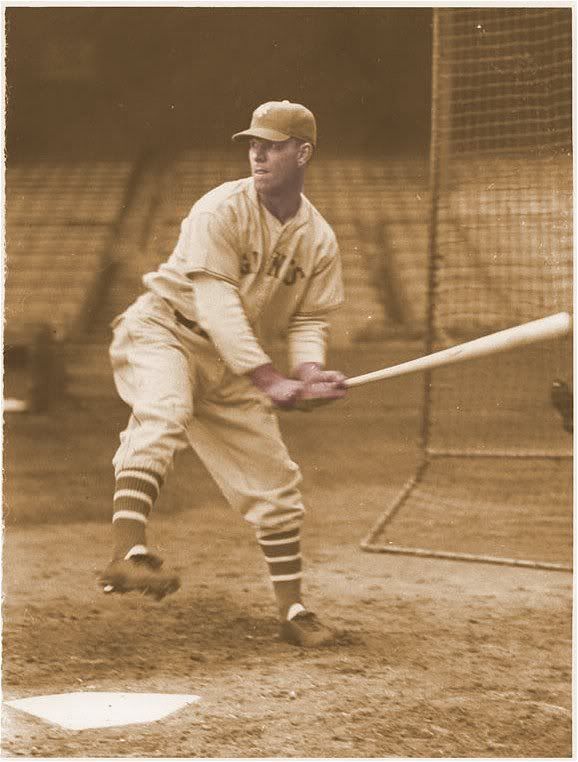Which type of stride makes the best results for a hitter? Is it the toe-tap? High leg kick? or is it a personal prefrence??What makes them diffrent??Plz Help
Original Post
Replies sorted oldest to newest
quote:Don't want them stridng and swinging at the same time.
quote:Originally posted by BlueDog:
There can be support given to the theory that the swing is what forces the front foot to the ground....
quote:.....there is credence in what you are attempting to say (poorly) but as is, the statement doesn't hold water in a high level swing.



quote:Originally posted by BlueDog:
quote:Originally posted by BlueDog:
Yessir, I see it and, no, I'm not opposed to it....
quote:Originally posted by BlueDog:
Mr. Tewks, I know I do it in my swing and it's to generate float....I have had several young students who, also, do it, but, I teach with my swing as a visual guide....So, maybe they're emulating me, I don't know....
quote:Originally posted by MN-Mom:
BlueDog,
Your PMing is not blocked. I am the person who would need to block your permissions, and I have not done so. I just double-checked your settings and they are the same as other members. If your PM messages seem to be blocked, they might have been blocked by the recipient.
Julie
quote:Originally posted by S. Abrams:
Good BP clip of Williams and of Berkmann in HR contest both hitting 65-70 mph grooved fastballs.
You can learn alot about hitting random curves, sliders, sinkers and changeups in BP and HR contests.
quote:Originally posted by S. Abrams:
Bobby,
Sorry to hear you're not feeling well.
Just seen too many .600+ hitters in BP over the years that neede to adjust their cup come game time.
Game film shows me more about the hitter.
Good timing and swinging at good pitches...totally agree with you.




quote:Originally posted by S. Abrams:
Good clip, swingbuilder.
No real argument with what you've said.
Good example of what I have been saying about the front hip opening versus hip rotation. Combined with Williams tendency to stride towards the 2baseman,makes the two movements hard to see. Williams would let the swing finish driving his lead foot heel down (similar to your stride catches the swing); he opens the front knee during the stride to toe touch ( opens the front hip without rotation) and uses the intiation of the swing to drive the front heel down with swing/rotation. Opening the front hip made it easier for him to clear his hips quickly during the swing.
Nice shot of the variance in hip rotation for both swings along with the variance in how open the front foot is at heel plant. Amazing ability to adjust.
In other words, you can open the front hip during the stride without rotating the hips. Rotating the hips before toe touch/whatever while striding is not what you want. Can't say it any plainer than that. The same thing can be done no-stride with opening the front foot and knee when setting the foot down (Pujols will do this).
And yes Virginia, I do teach hitters how to open the front hip into the stride and WHY and WHAT it does for them. The athletic kids usually do it naturally as well as having some degree of bat tip.
Both clips do a good job of showing the loading of the rear hip like Bluedog mentioned earlier.
Loop in the swing is the "flaw" Williams did intentionally to help create loft in the swing (short RF porch in Boston) as he wrote about in his book; made for a longer swing but accomplished what he wanted. He liked holding the bat vertically because he said it made the bat feel lighter in his hands. Williams swing was not one that awed with its raw power but rather with its smoothness, fluidity and precision. The man had amazing pitch recognition ability...probably because he outworked and outstudied the opposition. As a catcher, you see Williams swing and you see the holes in the swing... and then you are shocked as his ability to adjust and close the holes that others can't.
Just imagine being a teenage minor leaguer and having The Rajah as a coach....had to be heaven for someone as fanatical about hitting as Williams was.
BP film is fun to watch but I prefer game film 100% of the time. I want students to see the adjustments on varying pitch locations,etc. and how a hitter makes them. BP does show potential of a hitter but doesn't tell me if he is a really hitter or just a swinger ( which by the way, is one of the areas coaches and swing instructors often clash in opinions).
***You may or may not agree with all the above or anything..that is fine but if all the "specialists" and swing instructors would speak as plainly as I just did above, maybe everybody could get on the same page or at least understand the point. If we are really trying to help the parents and kids who are "the backbone of the game" then we will speak/type plainly. Doing otherwise is merely self serving to the ego of the writer.
Funny seeing the catcher's position/stance and how the strikezone has changed over time. Looks like Ted took a pitch on the corner to left/left center.

quote:you ain't opening that lead hip without that rear hip also responding.....